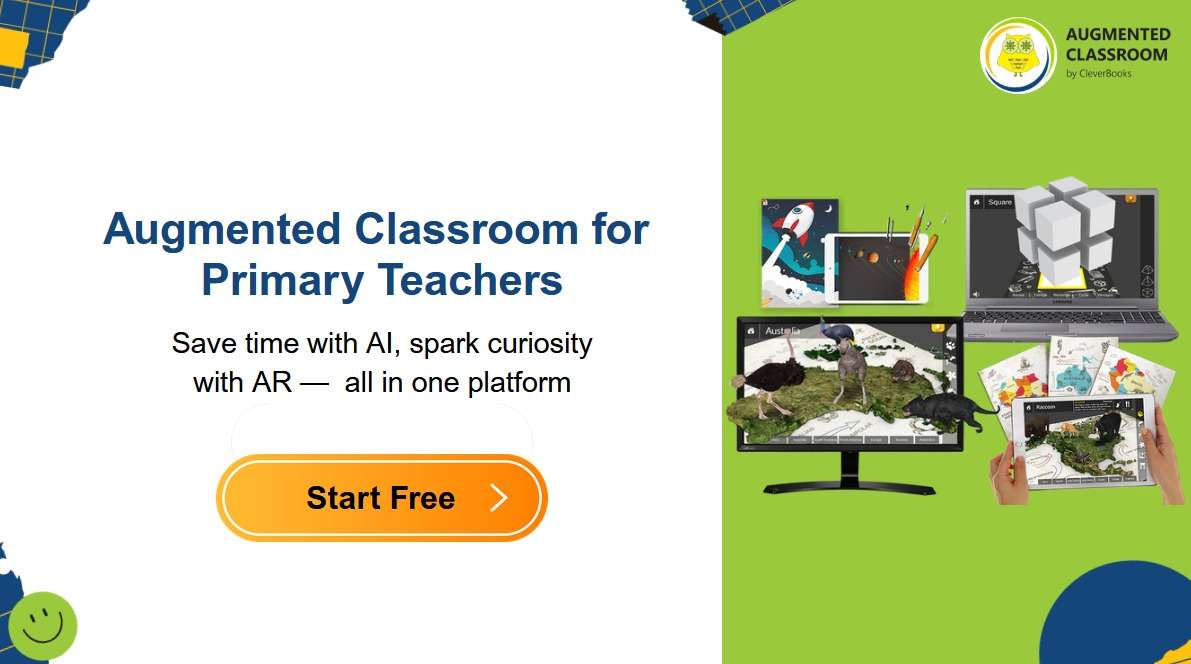You’ve seen it before, the glazed-over look, the phone hidden under the desk, the yawn during a lesson you worked hard on. Student engagement isn’t just a buzzword; it’s the daily challenge every teacher faces.
The old “carrot-and-stick” method of grades and deadlines is losing its power. But what if learning felt less like an obligation and more like an adventure students want to take?
That’s where Augmented Reality (AR) and gamification come in. It’s not just about adding points to a textbook, it’s a new way of teaching that taps into what truly motivates students, turning them from passive listeners into active, curious learners.
The Psychology Behind the Play: Why Gamification Works
Gamification works because it connects with what naturally drives people. It’s not about making lessons “fun” for the sake of it, it’s about creating meaningful engagement.
- Intrinsic Motivation: Instead of relying only on grades, gamification sparks curiosity and a sense of progress. Students push forward because they care about the journey, not just the reward.
- Safe Failure: In games, failure isn’t final. It’s a chance to try again. This encourages problem-solving, resilience, and creativity without the fear of a bad grade hanging over them.
AR: The Ultimate Gamification Engine
Gamification can be as simple as stickers or leaderboards, but AR takes it to another level. It adds the “magic” that makes learning immersive and unforgettable.
AR enhances gamification by:
- Turning Classrooms Into Game Worlds: Students don’t just look at scores; they step into the game. The classroom becomes the game board, and 3D models tied to the curriculum become tools they can interact with.
- Creating Discovery Moments: Learning feels like exploration. Students scan objects to reveal hidden layers, solve puzzles with 3D models, or uncover “Easter eggs” of knowledge around the room.
- Delivering Instant Feedback: Mistakes are visible right away. Build a bridge with weak geometry? It collapses. Mix the wrong virtual chemicals? The (safe) reaction happens instantly.
Practical Implementation: Building Your Gamified AR Classroom
This isn’t just theory, here’s how to design gamified AR lessons that actually work.
Step 1: Define the Learning Goal
What do students need to know? For example: the parts of a plant cell.
Step 2: Pick the Right Game Format
- Quest-Based Learning: A story-driven challenge. Example: “A virus is attacking the cell! Travel through the cytoplasm and repair each organelle by completing mini-games.”
- Puzzle-Solving: AR scavenger hunts or escape rooms. Example: “Scan markers around the room to assemble the DNA sequence and unlock the next clue.”
- Simulation & Strategy: Resource-based games with consequences. Example: “Manage an ancient Egyptian civilization. Your AR world will thrive or fail based on farming and trade decisions.”
Step 3: Link Game Mechanics to Assessment
- Points: Reward accuracy, speed, or creativity.
- Badges: Mark mastery of specific skills (e.g., “Mitochondria Master”).
- Progress Bars: Show how close students are to mastering a concept.
- Leader boards: Best used in teams or to celebrate growth, so all students feel motivated, not discouraged.
Measuring Success: Beyond High Scores
The real impact of gamified AR isn’t just excitement, it’s results.
- Formative Data: AR tools track time spent, retry attempts, and contributions in group work, giving teachers rich insights.
- Student Creations: Whether it’s a built molecule, a managed civilization, or a solved puzzle, their work becomes proof of understanding.
- Behavioural Changes: Fewer distractions, more peer-to-peer teaching, and even students complaining when class ends.
The Hard Truth: Implementation Challenges
AR gamification is powerful, but it comes with requirements.
- Strong WiFi: With 25+ devices streaming 3D content, a weak network won’t cut it. A solid 5GHz WiFi setup is essential.
- Device Readiness: Devices need to be charged, updated, and ready to go. A 10-minute delay kills the flow.
- Teacher Role Shift: Teachers become facilitators or “game masters” rather than lecturers. This requires training and comfort with a new way of teaching.
The Bottom Line
AR and gamification transform learning from a passive task into an active, memorable adventure. They replace the fear of failure with the excitement of discovery and swap surface-level compliance for genuine curiosity.
The goal isn’t to make learning easy, it’s to make the challenge worth taking on. When lessons are framed as quests instead of chores, students don’t just meet standards, they build a love of learning that lasts.

